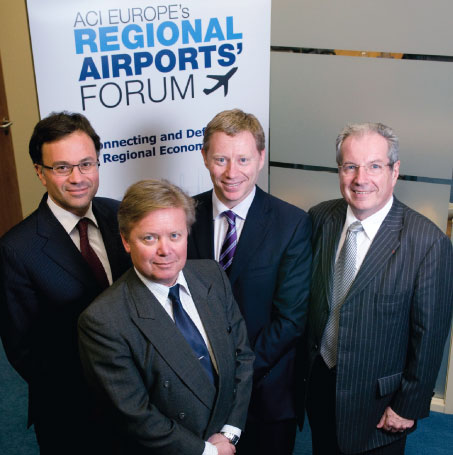
The 4 regional airports represented hail from 4 different countries in the North, South, East and West of Europe. While often facing their own unique challenges, they are united in their regional status and issues of shared importance. In this spirit of unity, they were in Brussels to meet with Philip Bradbourn MEP – rapporteur of the forthcoming Parliamentary Report on the Future of Europe’s Regional Airports. Airport Business sat down with them ahead of that meeting.
Challenges and opportunities
ACI EUROPE has developed a Regional Airports special publication – which will be released at the Regional Airports’ Conference in Ljubljana (2-4 April). The publication will highlight the challenges facing regional airports, as well as proposed solutions.
Europe’s regional airports operate in an extremely challenging environment, with difficult economic conditions affecting both consumers’ propensity to travel and their spending levels at the airport when they do. Sovereign debt crises and the threat of double dip recession have created an uncertain economic picture; airline network volatility adds to this uncertainty, with airlines increasingly flexible in moving aircraft and crews quickly. Indeed Ryanair grounded a record 80 aircraft this past winter, a move it attributed to rising oil prices.
“Combine this with an increased regulatory burden and inflationary costs and it is clear that regional airports are being squeezed,” commented Sinclair.
There was consensus that a pressing challenge for regional airports is ensuring long-term sustainability given the competitive environment in which they operate. Expanding on that competitive environment, Langeland added that increased competition means airports are generating less aeronautical revenue. “The challenge is that costs are going up, revenues are going down, and how to address that,” he said.
It is clear that aviation taxes have a detrimental impact on regional airports and their ability to develop infrastructure. Similarly, in a tough economic climate such taxes can be the difference between the success and failure of new services at regional airports. Sinclair highlighted the example of Air Passenger Duty (APD) in the UK, which he said “is out of step with flight taxes in other EU States, and puts UK airports at a competitive disadvantage.” “In January 2012 alone, UK Treasury receipts from APD totalled £223 million (€266m), making it by far the highest aviation tax in Europe. At Bristol Airport we have seen the impact of APD increases on the viability of existing and potential routes,” he said. “On a more positive note, there is an opportunity for regional airports to provide solutions to capacity problems across Europe. Utilisation of surplus capacity where it exists can better serve passengers in the regions by providing more convenient access to air travel. This can also reduce the environmental impact of long surface journeys to more distant departure points in the process.”
Impact of liberalisation
The Single European aviation market, established in the 1990s, removed all restrictions on air services within the EU, creating the world’s largest liberalised aviation market. Vernhes explained that this had an extremely positive impact on regional airports, with the emergence of the low-cost carriers and significant growth of point-to-point traffic. “For regional airports, liberalisation was a good opportunity to develop European services. The low-cost model coming in to develop those flights provided a real opportunity,” he said.
Liberalisation has provided connectivity, which is important for local and regional businesses and which has also boosted local economies through increased leisure travel. Highlighting the UK example, Sinclair commented: “In the UK, growth at regional airports outstripped that of the London airport system between 1990 and 2007, increasing choice for the consumer and bringing economic benefits to those regions served by growing airports. Intervention by the State risks distorting the market which has delivered this increased choice to travellers.”
Reflecting on the consensus that liberalisation has clearly been the great enabler of traffic in Europe, Brunini raised the question ‘What’s next?’. ACI EUROPE has called for the EU to step up efforts to create a pan-European/Mediterranean aviation area, and Brunini echoed this. “We need the next step. No doubt we’re all in favour of further liberalisation and more flexible agreements with countries neighbouring Europe. I’m thinking of the Mediterranean area – large communities of citizens have roots in North Africa, the Mediterranean area, or non-EU Eastern Europe. I’m sure if liberalisation was expanded to include those areas, without any doubt we would have a second phase of growth – it would be fuel for growth,” he said.
Social and economic importance
Airport Factbox
Toulouse-Blagnac
![]()
Jean-Michel Vernhes
Aeroport Toulouse-Blagnac
Chairman of the Executive Board since: March 2007
Previous position: career in the DGAC (French Civil Aviation Authority)
Airport traffic 2011: 6,988,151 passengers / 51,015 tonnes of freight
Growth rate 2011/2010: +9.1%
Number of employees: 302 employees
Number of destinations: 15 national, 40 international
Top 2 airlines and market share in 2011: Air France 48.1%, easyJet: 18.5%

Regional airports have a vital role in fostering economic and social cohesion. The connectivity provided by regional airports drives economic prosperity and enriches quality of life. “This is the main importance of regional airports – they are at the heart of their region and have a social and economic role that is very important for the development of the region,” stated Vernhes. “Our airport is very closely linked to our local and regional environment. Toulouse is the home of Airbus and we are the Airbus airport for all of their test flights; we are also the commercial airport for the Toulouse area. Of course, when we develop the airport, we must have in mind that it is linked to the development of Airbus and also the development of the city – the two things are very closely linked.”
Similarly, Bologna has strong export industries – notably Ferrari and Ducati – and the airport is a key contributor to its competitiveness. Brunini explained that connectivity is strategically important to this competitiveness – in terms of the region, its businesses and its tourism. He said: “We used to have mainly outbound traffic – now we are beginning to see
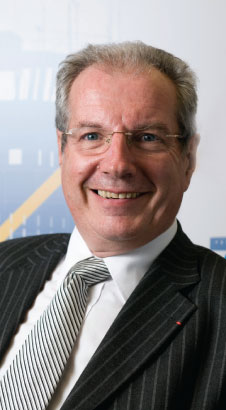
Vernhes explained that regional airports “have a social and economic role that is very important for the development of the region”.
more balanced inbound/outbound traffic, thanks largely to the airport creating new tourism. People are coming to Bologna for city breaks because we’re on the map now; we are in the networks of many airlines, including low-cost carriers.”
Sinclair added that “Increased labour mobility has stretched social and family networks across longer distances which only aviation can bridge. As a result, regional airports such as Bristol have seen a significant increase in VFR (visiting friends and relatives) traffic over the past decade.” He also outlined an example of air travel supporting social and educational links – the Bristol-Bordeaux Student Exchange had been running for more than 60 years, but faced closure in 2005 before the advent of an easyJet flight linking the two cities gave the programme a new lease of life.
The proximity to an airport is of critical importance to global companies when deciding where to locate their businesses. Key factors influencing relocation decisions include ease of access to markets and international transport links. Vernhes explained that all businesses choosing to operate in Toulouse want to be based near the airport. “We are the link between the city and the world. We see that the development of business in the region is very important, and in this context, connectivity from the airport to the centre of the city by public transport is very important,” he said.
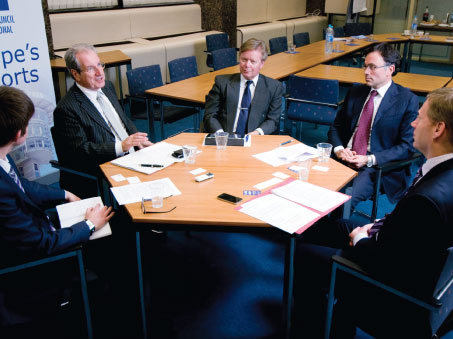
There was consensus that a pressing challenge for regional airports is ensuring long-term sustainability given the competitive environment in which they operate.
While Toulouse is the home of Airbus, UniCredit – Italy’s largest bank – has its retail business unit headquartered in Bologna, and Brunini explained that UniCredit and the wider business community in the region take a close interest in the development of the airport and the network is provides.

Langeland: “An airport is not just an infrastructure provider. It is a business and acceptance of that is a good starting point in the airport-airline relationship.”
In South West England, Bristol Airport serves an aerospace industry cluster employing 59,000 people across 800 suppliers and leading manufacturers, including Airbus, Rolls Royce and AgustaWestland. “Aerospace is a global business, so international connections are vital,” commented Sinclair. “Local business organisations are very supportive. They recognise the value of a strong regional airport and encourage members to use our services where possible.”
Several businesses within the oil and gas sector, for example providing offshore drilling equipment, are located in Kristiansand. Langeland highlighted the importance of connectivity with Amsterdam – the main hub connection for Kristiansand. “Without that connectivity, those businesses would probably relocate elsewhere,” he said. “Kristiansand is a small city with a population of 80,000 and they provide 3,000 or 4,000 local jobs, so the impact on the local economy is tremendous and the airport is important in that picture.”
Regulatory pressures
Airport Factbox
Kristiansand Airport
![]()
Thomas Langeland
Avinor Kristiansand Airport
Airport Manager since: 1 October 2006
Previous position: Director of Administration EFTA Surveillance Authority, Brussels, Belgium
Airport Traffic 2011: 953,202 passengers / 2,191 tons of freight
Growth rate 2011/2010: +13.5%
Number of employees: 58
Number of destinations: 4 national, 3 international, 8 international charter
Top 2 airlines: SAS group (SAS/Widerøe), Norwegian Air Shuttle

On the subject of regulation and whether the economic and operational specifics of regional airports are adequately considered at regulatory level, the consensus was that a ‘one size fits all’ approach is inappropriate. Regulation that suits Europe’s major hubs may not be best suited to regional airports. There was agreement that regulation is necessary, but with more flexibility. Langeland highlighted the differences in economies of scale and cost structures between regional airports and the larger hubs, and called for regulators to take that more into consideration when they regulate.
Brunini called for more “light-handed regulation” that better reflects the competitive environment in which regional airports operate. He was passionate in stressing the competition that exists for traffic, and also in other business areas such as car parking, which are an important source of revenue for regional airports. “This must be accepted by the regulator. We cannot have the worst of both worlds – we accept the free market, but we cannot be overburdened with regulation,” he asserted.
Sinclair concurred: “Any reduction in regulation would be welcome. While safety and security are ingrained in our business, the need for appropriate regulation in these areas is clear. The case for economic regulation is less justifiable. Aviation is an intensely competitive business, particularly at regional airports. In these circumstances, market pressures drive consistent improvements in the passenger experience without the need for regulatory intervention.”
He added that clearer consideration at EU level of the benefits that regional airports can deliver might lead to a more informed debate at Member State level: “The debate on future aviation policy in the UK is focused on addressing the issue of constrained capacity in London. As a result, the potential for regional airports to alleviate congestion and meet demand in a more efficient way can sometimes be overlooked.”
Airport-airline relationship
Airport Factbox
Bologna Airport
![]()
Armando Brunini
Aeroporto di Bologna
MD since: September 2007
Previous position: EVP Commercial Eurofly
Airport traffic 2011: 5,875,956 passengers / 31,521 tonnes of freight
Growth rate 2011/2010: +6.8%
Number of employees: 380
Number of destinations: 12 national, 80 international
Top 2 airlines and market share: Ryanair 34%, Alitalia 12%

It was agreed that a proactive partnership approach with the airlines is essential. Kristiansand, for example, is increasingly collaborating with its airline partners to build business cases for new routes, as is Toulouse. This dialogue has had positive results. Langeland said: “I believe that the airlines now look upon us as a business in our own right. An airport is not just an infrastructure provider, it is a business, and acceptance of that is a good starting point in the airport-airline relationship.”
Bristol Airport enjoys a positive and proactive relationship with its airlines. As an unregulated airport it works closely with its airline partners and has a high degree of input into the development of the route network at the airport. “We look for a long-term commitment and take a sustainable approach to route development,” said Sinclair. “We are not in the business of launching then pulling routes and will
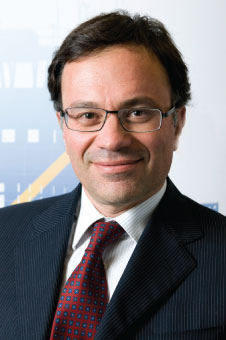
Brunini: “We cannot have the worst of both worlds – we accept the free market, but we cannot be overburdened with regulation.”
use our own market data to demonstrate which routes are most viable. Our ultimate aim is to maintain a diversified range of leading carriers across all sectors.”
He added that managing the different strategies and business models of the low-cost, charter, hybrid and full-service carriers is “a dynamic, fluid daily activity”.
State Aid
On the subject of State Aid, there was broad agreement that there are issues of public service, particularly in remote areas, but that there must be a level playing field elsewhere, where airports are competing. “The rules of competition must apply,” stated Brunini. Vernhes added that the rules must be clear and also clearly enforced.
Sinclair expressed the view that airports operate in a highly competitive, efficient and commercial market. “They should be required to fund infrastructure, route development and marketing on their own commercial terms. It should not be the State’s role to intervene by making bets on which new routes will be viable,” he said. “To be successful in the long run, routes must be justified solely on their commercial merits. State Aid is particularly sensitive where competing airports exist either side of a land border. In such cases intervention will distort the market and waste public funds without delivering any consumer benefit.”
Ground Handling Regulation
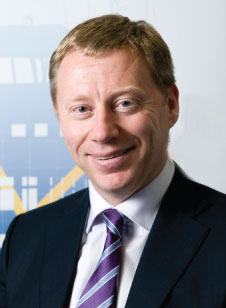
Sinclair: “Aviation is an intensely competitive business, particularly at regional airports. Market pressures drive consistent improvements in the passenger experience without the need for the regulatory intervention.”
Airport Factbox
Bristol Airport
![]()
CEO since: October 2008
Previous position: Chief Financial Officer of Auckland Airport in New Zealand
Airport traffic 2011: 5.77 million
Growth rate 2011/2010: +1.8%
Number of employees: 203
Number of destinations: 13 national, 90 international
Top 3 airlines: easyJet, Ryanair and Air France-KLM
The European Commission’s Proposal for a Regulation of Ground Handling services proposes full liberalisation of self-handling and the requirement for full legal separation of handling activities for airports. It is an issue of concern and an example of how regulation can have unintended consequences which contradict the original aim.
Two ground handlers currently operate in a very competitive environment at Bristol Airport. “The forced introduction of a third player would raise concerns over space and safety, and would ultimately result in a lowering of service standards. This is a clear example of how a ‘one size fits all’ approach to regulation can be damaging for regional airports,” asserted Sinclair.
Vernhes recounted a similar experience at Toulouse, where until the beginning of 2012, three ground handlers were operating at the airport. A fourth ground handler is now operating at Toulouse, specifically for easyJet, and Vernhes believes that four ground handlers is too many for an airport handling 7 million passengers per year. “I think the market will certainly contract from four to three,” he said.
Brunini added: “At regional airports, it’s not sustainable to have too many ground handlers. The high risk is that quality of service will go down. The legislator has to give us some tools to manage the quality of service and we don’t have them; we don’t select the handling agents – they’re contracted to the airlines.”
What keeps you awake at night?
We concluded the interview by asking ‘What keeps you awake at night?’ The answers were varied and interesting. Langeland indicated the need to create sustainable growth and to ensure that travellers in the Kristiansand catchment area, particularly those travelling to international destinations, choose to fly from Kristiansand and not another airport. Brunini highlighted the challenge of operating in a true market economy with pressure on margins.
Vernhes expressed concern about the then forthcoming France-England Rugby match (England won 24-22 in Paris). “On the business side, here in Europe we are faced with the big problem of the sustainability of the development of the airlines. What will be the development of the airlines linked with our airport?”
Sinclair referenced the prospect of a prolonged recession, further increases in fuel prices, inflation remaining high, with no change to aviation taxes exacerbating an already weak demand environment. “These are the challenges we face in the regional airport sector, but in the light of day, we cannot let this overshadow the tremendous opportunities we have to contribute to economic recovery,” he said, while also highlighting the ‘one bag rule’, which has had a very detrimental impact on the airport shopping experience. “Where airlines are implementing the ‘one bag rule’ we look to work with them to minimise the impact on passengers. This can be a confusing message, so clear communication is vital,” explained Sinclair.
Regional airports clearly operate in a challenging environment, with regulatory and competitive pressures. They are also vital as engines of economic prosperity in their regions, and can undoubtedly play a vital role in the economic recovery with their untapped capacity. ACI EUROPE’s Regional Airports’ Forum offers an excellent opportunity to engage on these critical issues.
Interview with Philip Bradbourn MEP
Philip Bradbourn MEP is rapporteur of the forthcoming Parliamentary Report on the Future of Europe’s Regional Airports. Here, he outlines some of the details to Airport Business.
What does your report cover?
Bradbourn: My report covers a number of key issues with regard to the future development of regional airports and air services, most notably definition of a regional airport, the future of State Aid for regional air services, quality and sustainability of air services from regional airports and ensuring greater competition in the sector.
When will it be published?
Bradbourn: It is already publicly available, as are amendments to the report. It will be voted in Committee on 27 March.
What do you think of regional airports’ role in boosting economic and social cohesion?
Bradbourn: Regional airports have a significant role in promoting economic growth in a region, not simply directly related to the airport and its services, but by encouraging inward investment into regions and in encouraging economic diversification by connecting different commercial sectors across the EU.
Are you confident about the future of Europe’s regional airports?
Bradbourn: Currently, I have mixed views on the future scope for regional airports. This is due to:
- General economic climate;
- Consolidation by airlines meaning less services (and downgrading the quality of those services) from regional centres both to major hub airports and direct to other regional airports;
- Problems associated with dominant players in the sector using their commercial power against the interests of smaller airports in terms of service contracts, fees and charges etc;
- Lack of connectivity between different modes of transport in respect of some regional airports; and
- Failure by some airlines to invest properly in developing markets from regional airports and focusing too greatly on hub-hub operations, especially where there are valuable slots which could be used for longer haul services.
I do not wish to see regional airports become exclusively used by low-cost carriers to the detriment of scheduled airlines, as maintaining a mixture of services will better protect the future viability of regional airports.
EU policy, if directed correctly, could remove some of the problem areas, especially in strategies, which would ensure that larger regional airports were included in the TEN-T core network. Member States also have a role to play in promoting, within national aviation strategy, the value of regional airports and air services rather than simply focusing on services from one or two hub airports in each Member State.
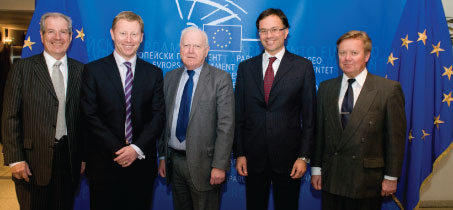
Vernhes, Sinclair, Brunini and Langeland met with Philip Bradbourn MEP (pictured centre) – rapporteur of the forthcoming Parliamentary Report on the Future of Europe’s Regional Airports – at the European Parliament.







